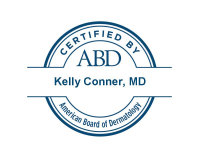Skin Conditions & Treatments > Seborrheic dermatitis (Dandruff)
Dermatology A-Z
There is a reason that you will see a long aisle-full of shampoos for dandruff at the grocery store. It is very common, chronic, not curable, and annoying! Dandruff (seborrheic dermatitis) is mostly just a nuisance but for some people the itch and the flaking can become a major problem. If you think you are experiencing something more than minor dandruff, a visit to the dermatologist can be really important in getting it under control. Seborrheic dermatitis can also occur on the face in the eyebrow hair, beard area, and creases of your nose. It is usually red with a greasy and flaky scale. A proper diagnosis is your first step because seborrheic dermatitis can look very similar to other conditions of the scalp such as fungal infections (tinea capitis) or psoriasis that would need different treatment and management.
Seborrheic dermatitis is caused by several factors that include your genetics, age, environment, stress levels and naturally occurring
populations of skin yeast (Malassezia sounds like a tropical island but it is actually the name of the yeast on our skin). In babies,
we call it "cradle cap" if on the scalp, however it can occur all over an infant's body and luckily it usually resolves after 3-6
months. In adults, it is considered a chronic and long-standing condition that will come and go, wax and wane, throughout our life.
Therefore, a management strategy that includes treatment for flares AND for maintenance in the long-term is crucial to keep your scalp
and face clear.
Click on the links below for more information:









